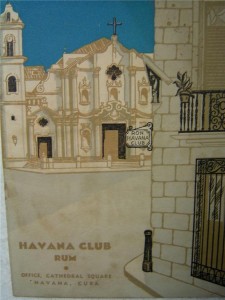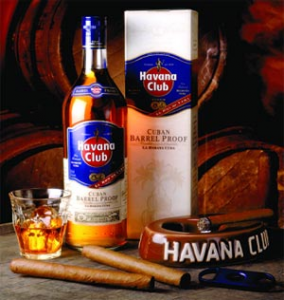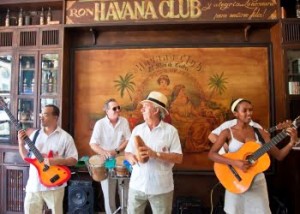Havana Club
April 9, 2012 by admin
Apart from the lovely cultural, educational, political and social experiences we had in Cuba, the famous rum “Havana Club” played a critical role in our diet at different [an maybe often] times. Cuba was described as the “Isle of Rum” due to its high quality sugarcane, a crop introduced on the island by Christopher Columbus in 1493.
Since then, the “Quality improved drastically in the 1800s with the introduction of copper stills and the first attempts at ageing. Pedro Diago, known now as the father of Cuban rum, can be thanked for this. He had the idea of storing the “aguardientes”, or eaux-de-vie, in pots and burying them in the ground. The second half of the 19th century saw the production of a lighter and more refined rum, known as “Ron Superior” (www.havan-club.com).
The Spanish Crown issued instructions to develop a “delicate” rum to satisfy the Elites who were the primary consumers of the rum from Cuba. By 1860, Cuba was home to more than 1000 distilleries encompassing the art of “añejamiento : the art of distilling, ageing and blending premium rums.
In terms of marketing Cuban rum, the name “Havana Club” captured Cuba’s rum-making heritage and the unique atmosphere of Havana as it reflected Havana’s lifestyle as a “play ground” for the elite who travelled to the Island for the rum, casinos, sun, beaches and prostitution that characterized the Island prior to the revolution in 1959.
Havana Club is a brand of rum currently manufactured in made in Santa Cruz del Norte, Cuba. The brand was established in 1878 by José Arechabala but just like many private entities, the company was nationalized in 1959 after the revolution. A very interesting aspect of the distillation process makes Havana Club rum unique from other brands; that is the “Maestros Roneros” (literally “master rum-makers”) Who are the Maestros Roneros? They are guardian spirits behind Havana Club rum who oversee every step of the rum-making process, from the selection of sugar cane to the final bottling; blending and ageing of the rum with particular passion, patience and precision, as well as a strong commitment to Cuban rum-making tradition. Who can become a Maestro Roneros? At least 15years of training is necessary for one to become a Maestro Roneros!
As Don José Navarro, Havana Club’s Primer Maestro Ronero, explained “The rum doesn’t come from a magical combination, It is a cultural legacy, passed on from Maestro Ronero to Maestro Ronero, from heart to heart, from Cuban to Cuban.” (www.havana-club.com).
However, it is important to mention that during my research, I noticed the lack of women Maestro Roneros but was not able to verify whether this is a position reserved only for men or whether Havana Club had ever employed female Maestro Roneros.
Overall, Havana Club has evolved to symbolize Cuban culture and continues to maintain its reputation as the best rum worldwide, and after visiting Cuba, I agree!!!
Sources
http://www.guardian.co.uk/havana-club/don-navarro
http://adage.com/article/global-news/havana-club-rum-runs-international-marketing-cuba/229309/
http://www.havana-club.com/en/int/havana-heritage/maestros-roneros
2 Responses to “Havana Club”
Leave a Reply
You must be logged in to post a comment.






freespins UK casino
hcg injections in Fort Valley
» Havana Club CUBAN TRANSITIONS